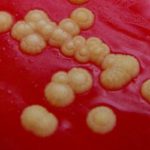Dr Rebecca Tirabassi
Rebecca has a PhD in Molecular Biology from Princeton University. Experienced Consulting Specialist with a demonstrated history of working in the biotechnology industry. Skilled in Real-Time Polymerase Chain Reaction (qPCR), Vaccines, Molecular Biology, Biotechnology, and Virology. Strong media and communication professional. Her postdoctoral research at Harvard Medical School was focused on Virology.
Articles by Dr Rebecca Tirabassi
Learn the basics of how to passage cells in culture with this easy-to-follow guide. While the specifics change per cell line, the basics remain.
Discover what RNA quality control is, why it’s so important for your experiments, and how to undertake it with these 3 key considerations.
Cryopreservation is crucial to the long-term maintenance of cells, so it’s important that you’re clued up on your freeze–thaw cycles. Check out our top tips for freezing and thawing cells.
Why do you get three bands when running uncut plasmid DNA on agarose gels. Discover the answer and how it can help improve your DNA plasmid preps.
Look out technical science writing, there’s an alternative voice in town. In the past decade, bloggers have taken to their keyboards and changed the voice of the internet. With their relaxed writing styles and ability to impart wisdom in a few short paragraphs, most of the online population consumes science blogs. Although scientists are often…
A few years ago, when I was working for a biotechnology company, I got a special letter in the mail. The NIH asked me to be an ad-hoc grant reviewer for small business grants. Although I drew these lessons from the NIH grant review process, they can probably be applied to many granting agencies. If…
If you were to peek into a protein biochemist’s bag of tricks, what would you find? A mortar and pestle for collecting samples, some columns for isolating proteins and a mass spec instrument? Perhaps. But what about those little eppendorf tubes full of enzymes and helpful molecules? Certainly, each scientist has his/her own favorite. Here…
Whether you are writing your thesis, a manuscript or a grant, there will come a time when you need to write, but getting words onto the paper will be like trying to get DNA from a rock – you are pretty sure it ain’t going to happen. Luckily there are a few tricks you can…
You are a scientist. You run experiments in the lab, but also spend a lot of time analyzing data, writing, doing literature searches, writing, reading and did I say writing? The good news: You can do some of your work from home. The bad news: You can do some of your work from home. Working…
Having kids changes your life. I should know, I have 5 little F1’s running around. Your life is thrown into chaos the minute you hear that first cry. And it isn’t only your personal life that changes. Eventually you have to figure out how to fold your new parenting responsibilities into your lab life.…
Oligonucleotides are those smallish bits of DNA or RNA that we rely so heavily on for many of our molecular biology experiments. In their naked form, they are single, inert strands of DNA or RNA bases. But if you dress them up, you can increase their functionality. Here are some of the common oligo wardrobe…
I used to love working in the lab on Saturdays. No, I didn’t spend every Saturday in the lab and yes, I did have a life outside of the lab (that’s one reason Saturday work was so great). But there are some great benefits to working in the lab on the weekend: Beat the commute…
Life in the lab is easy-peasy when you are only prepping a handful of tubes. But what if you need to scale up to 10’s or even 100’s of samples? Scaling up your experiments can have some expected and some not-so-expected, leaving you in a lurch, consequences. Read through our tips so you aren’t caught…
They say a magician is never supposed to tell the secret behind his tricks. It’s a good thing then that I am a molecular biologist and not an illusionist. Because once I learn a good trick, I feel the need to spread it like dandelion seeds floating on a breeze. That’s what inspired me to…
Sometimes a clever little trick for cloning comes along that makes you just give an appreciatory “ahhh.” For me, it was TA cloning. TA cloning is not a new technique (I am showing my advanced laboratory age here), but when I discovered it, the simple elegance of the technique made me pause and wonder about…
So you grab a quick 5 minutes in between lectures to sit down and tackle an item on your to-do list: order a secondary antibody for an upcoming experiment. But when you start to search your favorite secondary antibody provider’s website, you realize it is not going to be a 5 minute job. Conjugated, F(ab’)2…
What do science and rapping have in common? Usually not much. Unless you happen to be Tom McFadden that is, and then rapping becomes a tool for teaching kids about science. Tom McFadden is no stranger to music and science. Tom is a science communicator whose hit single, Regulatin’ Genes, garnered him national recognition. In…
Have you ever emerged from the lab, bleary-eyed, blinking dazedly at the sun after spending hours hunched over a lab bench counting endless bacterial colonies or viral plaques? A necessary evil… I consider colony/plaque counting one of the necessary evils of working with microorganisms. Necessary because many experiments have an endpoint that requires determining the…
You’ve been told that maintaining a sterile environment in a tissue culture hood is vital to preventing contamination of cell cultures. But what exactly is meant by sterile? The definition of sterile is ‘completely clean, sanitized, and free of all forms of life’. Obviously you still want your cells and/or any other organisms you are…
Ribonucleases (RNases). We’ve been giving them a hard time here lately. We’ve been talking about how they are the bane of the lives of researchers who work with RNA. And we’ve told you how to find their weaknesses and shown you a myriad of weapons that you can use to kick their RNase butts. But…
Mammalian cell culture can easily deplete grant funds. Sometimes you can alter protocols to use expensive reagents sparingly. Here are a few tips!
In my last article, I explained that plasmid DNA recovered from a plasmid prep consists of few different species; supercoiled, nicked, linear and single stranded circular, and how you can distinguish them on a gel. Supercoiled DNA is the desired form of plasmid DNA; it performs better in downstream applications such as automated sequencing and…
Finding a good primary antibody can often feel like playing Russian roulette. Nothing is more disappointing than buying a $300 antibody that doesn’t work for your use. There are some steps you can take, however, to increase your likelihood of success. Scout out Other Labs Before you buy, ask if anyone around you or in…
Visualization of DNA in gels is one of the most common procedures a molecular biologist can perform. In a good day, I can run at least 4 different DNA gels! When I was trained, ethidium bromide (EtBr) was the only viable option to easily visualize small amounts of electrophoresed DNA. However, safer and more sensitive…
Before using any Biological Safety Cabinet (BSC) for the first time, have a person with working knowledge of the machine give you an overview of how to use the cabinet. Different labs have different protocols in regards to running the cabinet, disinfecting the cabinet, determining which pathogens that may be used in the cabinet and…
As we learned in my previous article, cell culture hoods have many names. As if that wasn’t enough, they are all-too-often misunderstood and mistreated, which can lead to dangerous situations harmful for both the worker and the general lab environment. Here are three common ways that workers abuse biological safety cabinets; make sure you don’t…
Biological safety cabinets, laminar flow hoods, clean hoods and culture hoods are all common names for those essential pieces of equipment that you use in cell culturing. The terms are used inter-changeably, but in fact there are lots of different types of culture hoods, each of which does a different job. Knowing which is which…
Commercial kits for isolation of large quantities of plasmid DNA generally rely on standard alkaline lysis followed by an affinity chromatography column-based method to purify DNA. Compared to traditional cesium chloride banding or PEG precipitation of plasmid DNA they are a breeze, and have the added benefit of avoiding use of toxic or hazardous chemicals…
Western blots may be great for visualizing protein expression, but they can be a perfect way to waste your precious antibody stocks if you follow the normal protocol. Thankfully, you don’t have to follow the normal protocol any more; here’s how to get great blots with a fraction of the antibody usage. I have tried…























